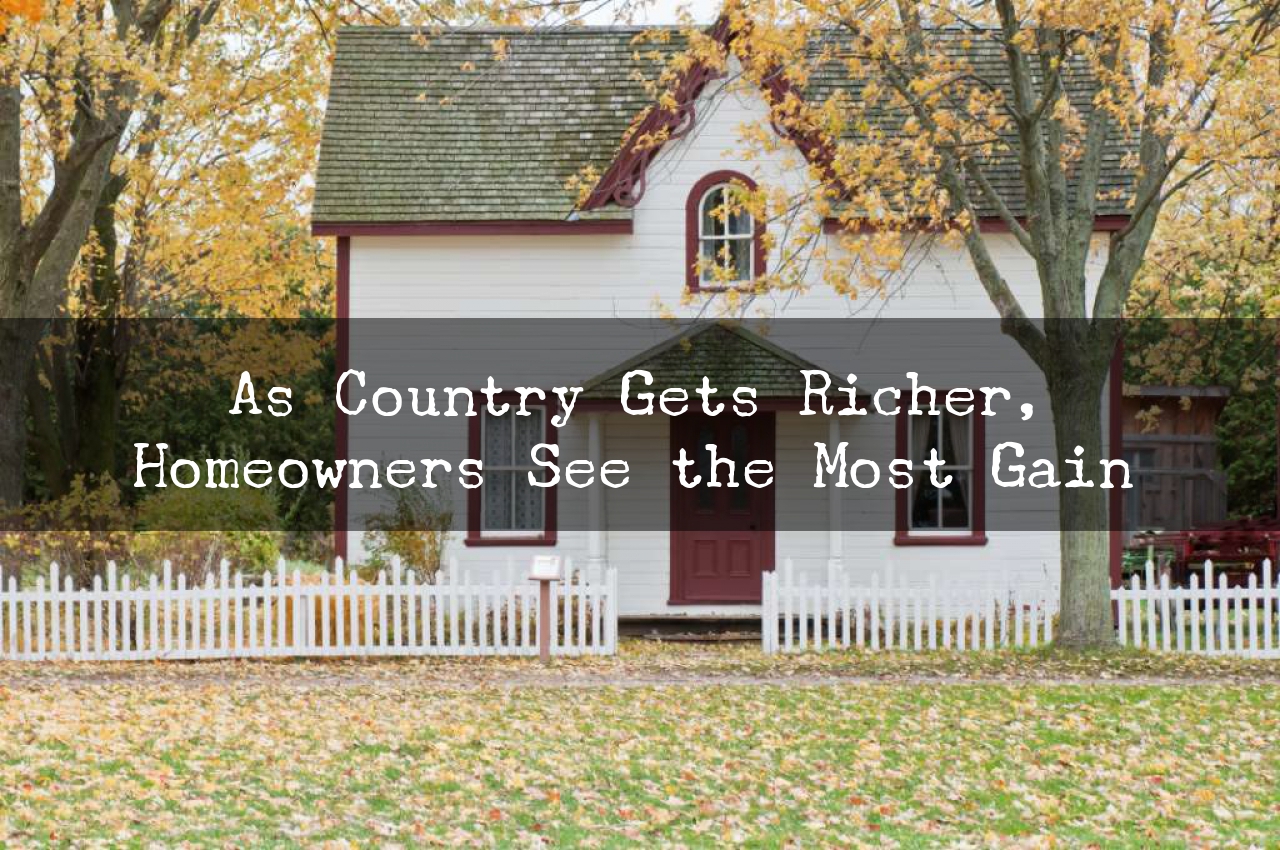As Country Get Richer, Homeowners See the Most Gain
Late last year, the United States quietly hit a financial milestone. According to a report from the Federal Reserve, household net worth in this country rose to a new record, hitting $98.74 trillion. That astronomical figure—the sum of all assets, such as stocks and real estate, minus the cost of debts and liabilities, like outstanding credit card payments—jumped $2 trillion in the last quarter of 2017 alone, surging past pre-Great Recession levels. As economist Michael Feroli told the Wall Street Journal, the ratio of wealth to income is “at pretty dizzying levels right now,” especially considering that the U.S. savings rate has actually decreased in recent years, dropping from 7.19 percent in 2015 to 3.74 percent last year.
At the risk of echoing the “greed is good” ethos, increased household wealth can be a positive thing overall. More buying power can mean more investment and economic activity. It’s certainly better than decreasing wealth, though some analysts have said the concurrent rise in assets and decrease in savings looks uncomfortably similar to the run-up to other financial busts. But while the quarterly report, known as the “flow of funds,” shows growth, it doesn’t break down demographics or examine how assets are distributed. That breakdown would likely show much less encouraging news: evidence of an economy becoming more and more uneven, due to the unequal distribution of opportunity across economic, racial, and generational lines. According to that same Wall Street Journal article, this recent explosion in wealth comes in large part due to stocks and property value. The bullish stock market saw huge gains in 2017, with the S&P 500 rising 19 percent, and the Dow Jones Industrial Average jumping 25 percent. Household wealth increased $1.346 trillion in the fourth quarter alone. During that same period, household value rose $511.2 billion, or 1.6 percent...

